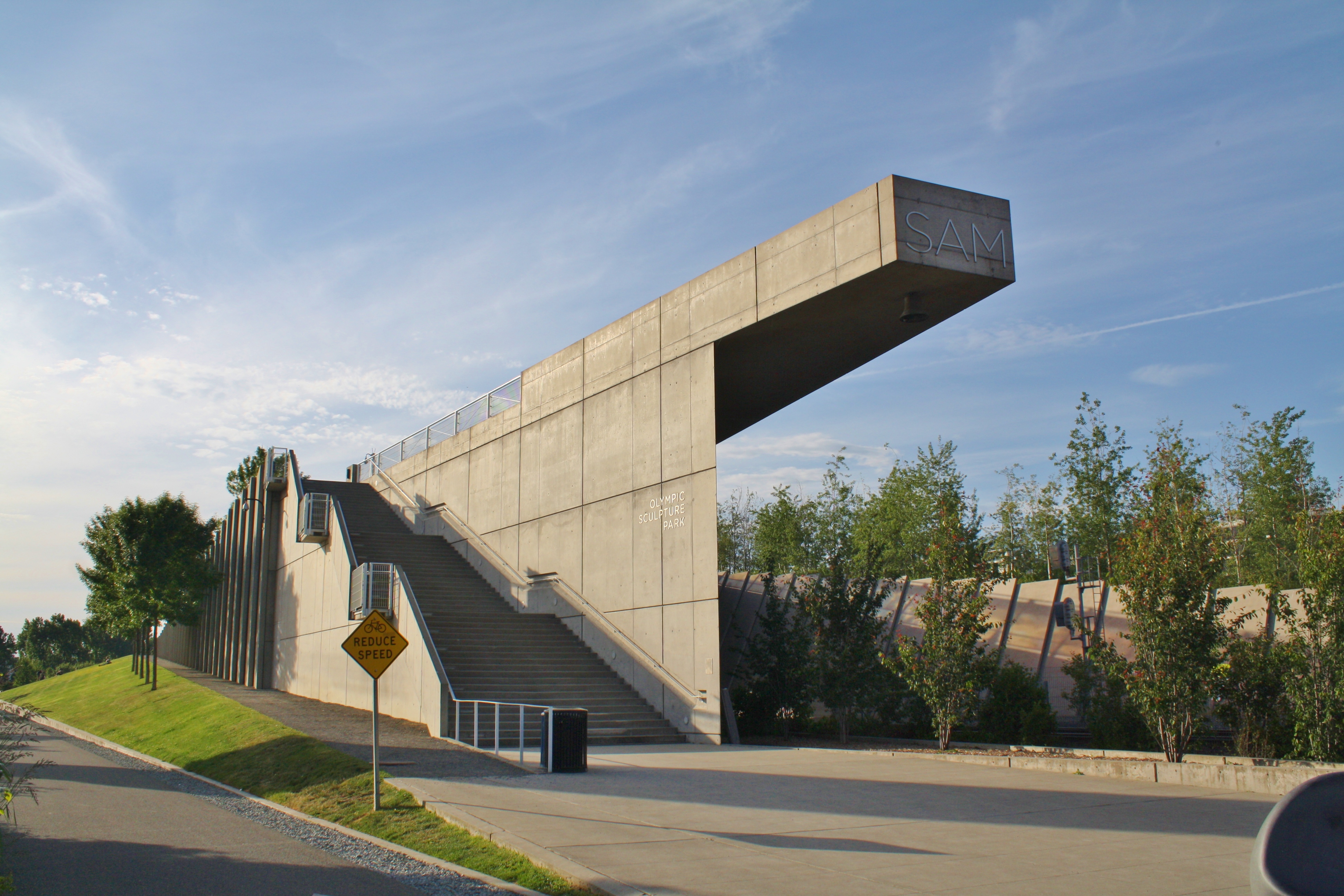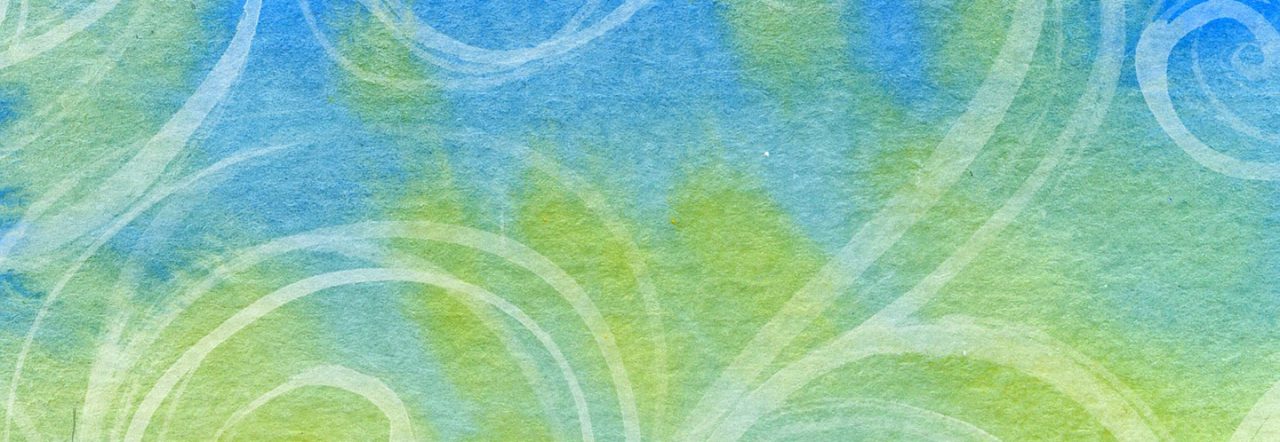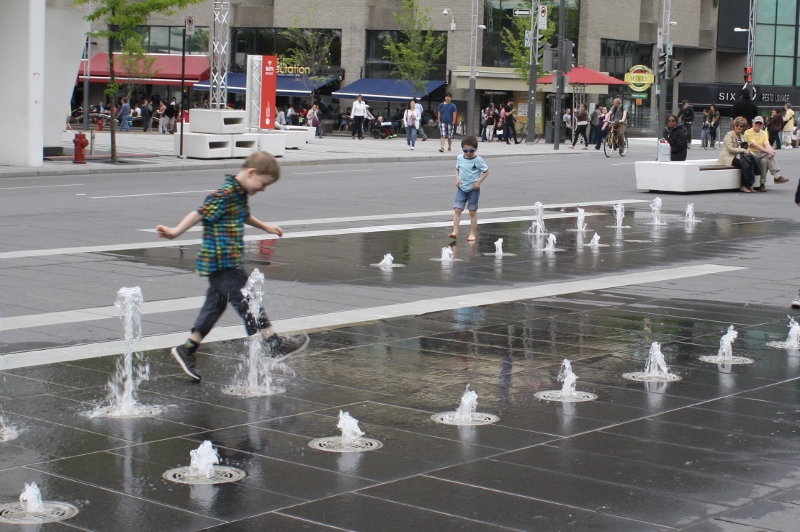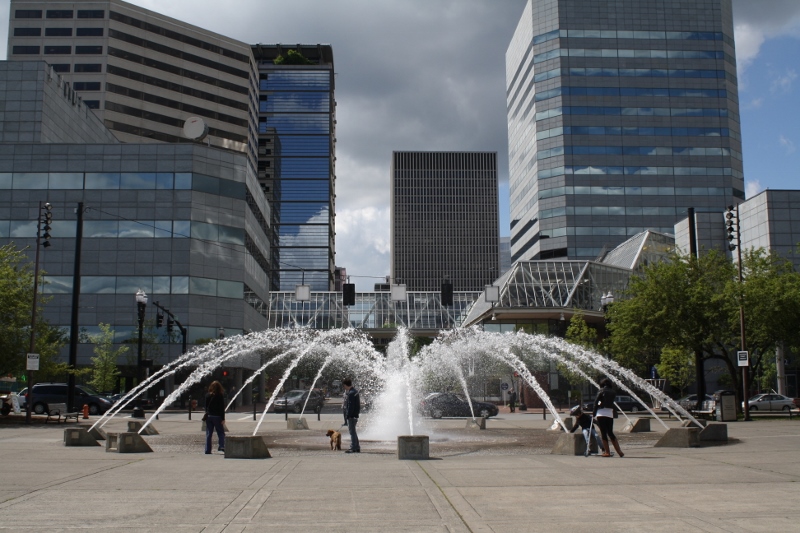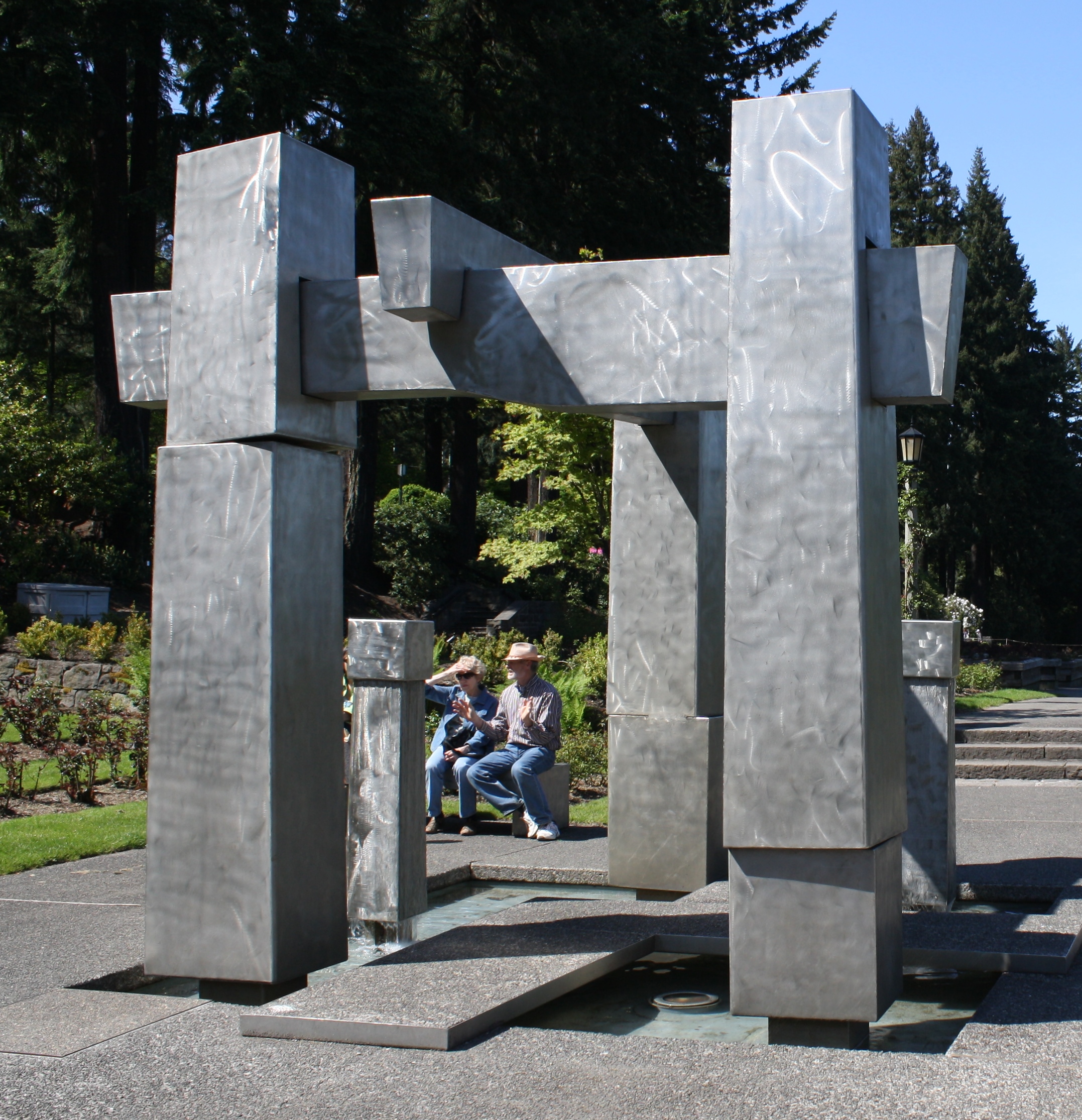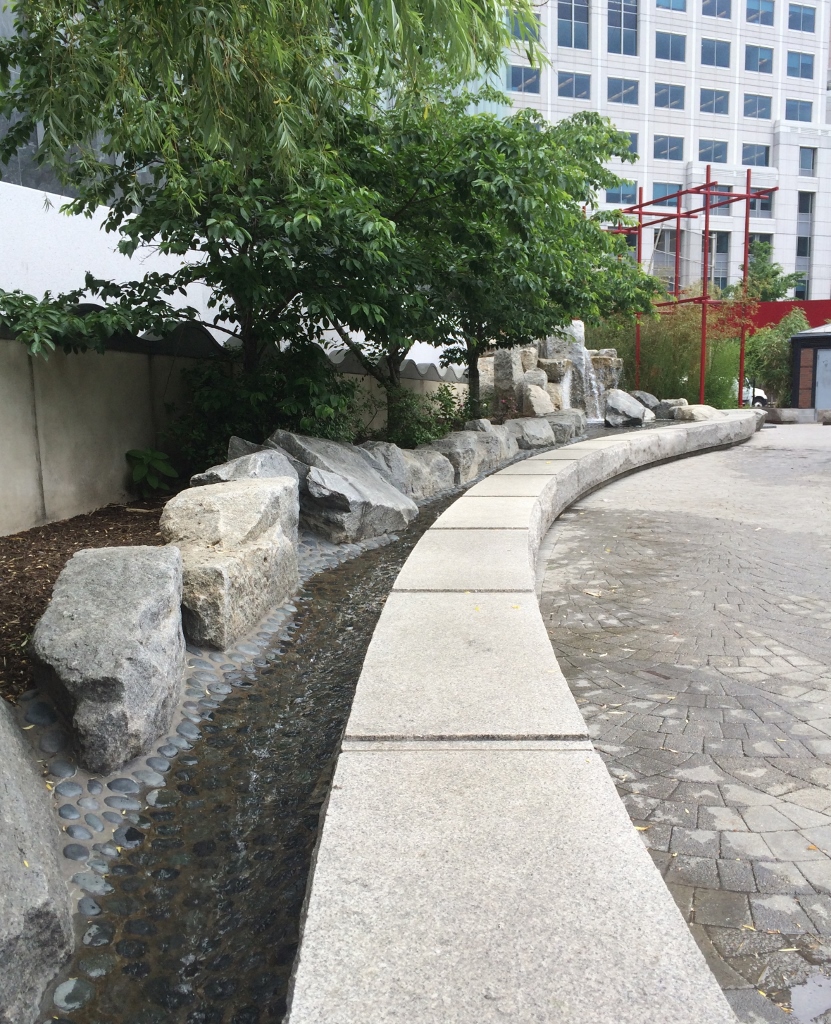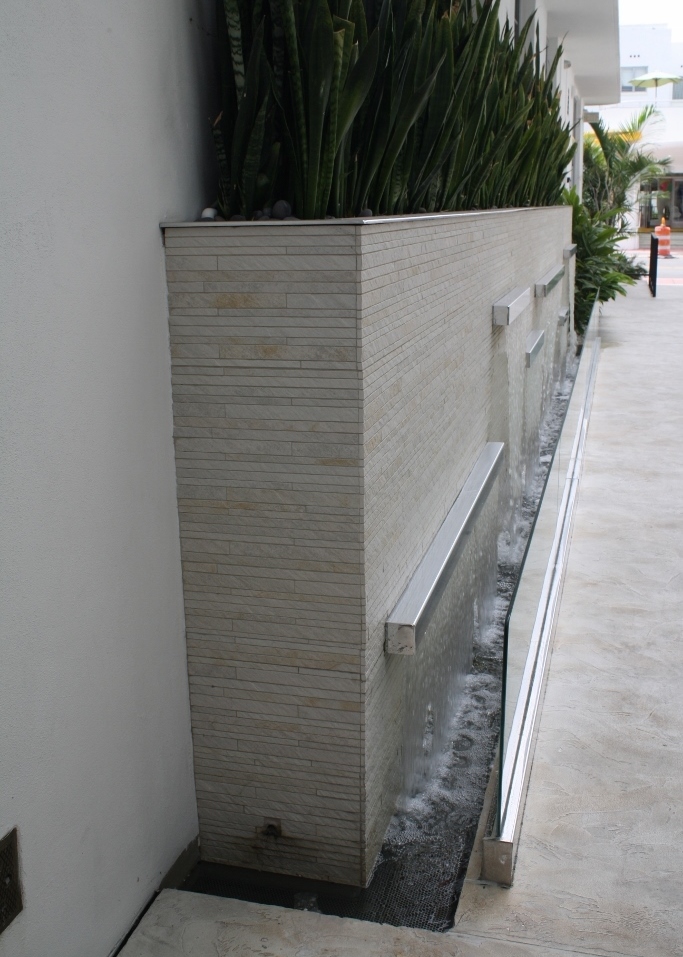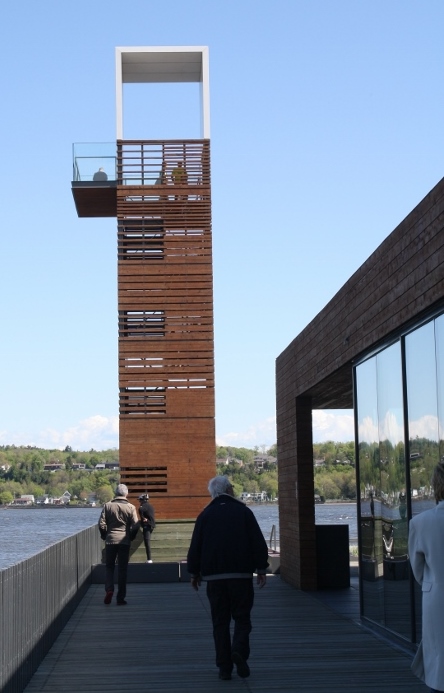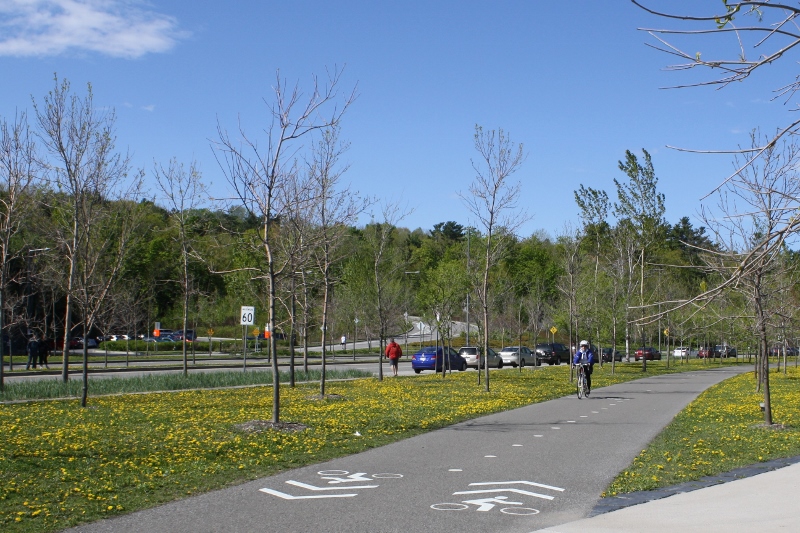Citygarden is a relatively new (2009) sculpture park in downtown Saint Louis, Missouri, which I visited in late October of 2012. It encompasses two city blocks, and features over 20 works of art. The design of this park was inspired by the natural characteristics of the region’s river environments. Along the northern edge of the property, urban terraces represent river bluffs; the central, lower segment loosely depicts a flood plain; and a serpentine seat wall symbolizes a river as it winds along the southern section of the park. In addition, Citygarden has several sustainable features, including six rain gardens and a green roof on the park’s café.

All features at Citygarden are meant to be experienced – there are no “Do not touch” signs to be found at the park. In warmer months, a thin sheet of water runs down the Tilted Disc in front of this sculpture.

A series of steel arcs is one of the first sculptures in view when entering the park from the east. The Limestone Arc Wall, which gently curves across the length of the park, can be seen in the background.

The long, rectangular Split Basin is situated in the northeast quadrant of the park. There are two levels to this basin, with a waterfall in between, where the Limestone Arc Wall intersects it. A modernist café is situated to the right in this photo.

Arc sculptures as seen from above the Split Basin’s waterfall

The lower portion of the Split Basin includes stepping stones.

Park visitors check out the Video Wall.

The granite Meander Wall separates lawn from lush plantings

The Meander Wall continues along the southern section of the park, for 1,100 feet.

“The Door of Return” stands along the park’s central walkway. In summer, the Spray Plaza, behind this sculpture, includes numerous vertical water jets that spray in various patterns, with dancing lights at night.

“Scarecrow” stands guard along a wooded walkway.

“Zenit” adorns the summit of a hill at the park’s northwest corner.

View from the park’s high point, facing southeast

Playful rabbit sculpture at the park’s west end
Photos by Alice Webb




